The remote observation of partial solar eclipse
I would like to show my observation output. The last solar eclipse was visible throughout the southern part of South America in the morning and next in the western part of Africa during the evening. This eclipse was annular, so Moon’s disk was too small to fully cover the Sun. Eventually, the observer could see a beautiful ring. Traditionally it was possible to make a remote observation through the web cameras located in the area of the eclipse. Unfortunately, I couldn’t find a good camera in the antumbra path, so I used a camera located outside the main phenomenon in the area of the partial eclipse. This observation was continued since the last annular solar eclipse, which I was watching on the 1st of September. This time I focused on the sky. My point of observation was changed in the sky brightness during the partial eclipse. I took a very similar observation during the last annular eclipse, although the web cameras, through which I used to watch the scene were poor. In effect, I received quite small and pixelated images. I have learned from that time to use at least VGA cameras to do this kind of observation, thus I couldn’t use the cameras, which I found on the antumbra path in Chile.
My place of observation was “situated” on the Cerro Chapelco Base in the vicinity of San Martin de Los Andes (Department Lacar, Province Neuquen).
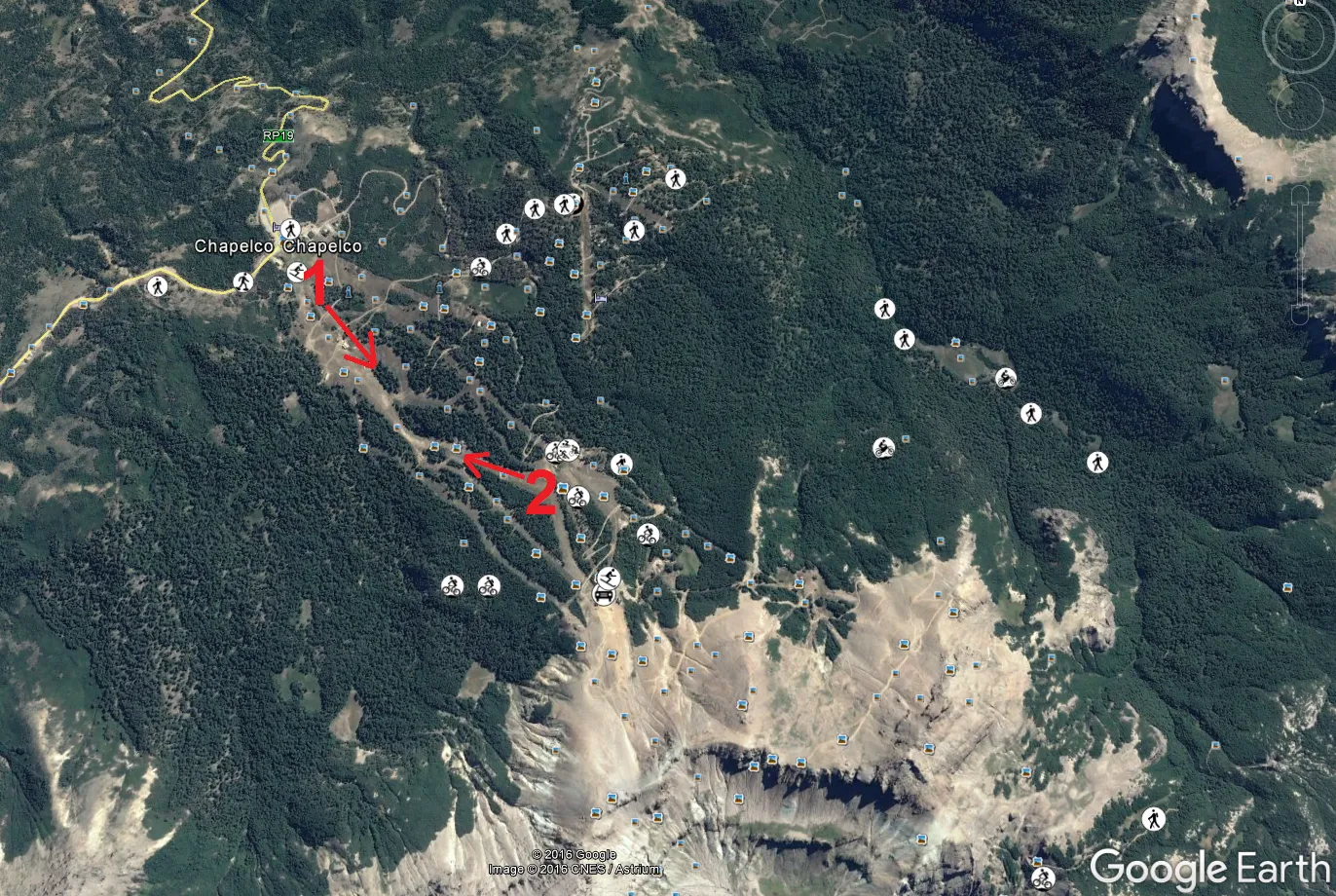
Pic.1 The web cameras are based on the Cerro Chapelco Base. Number 1 – camera headed for the southeast, number 2 – 2 cameras headed for the northwest.
One camera is situated on the bottom of the ski area and headed for the southeast, another two cameras record the image from the top and they are headed for the northwest. The image is reloaded every 5 seconds.
The first contact was around 12:20 UT. I started my observation at 12:15 UT (pic.2) and finished at 13:45 UT. The maximum eclipse occurred around 13:30 UT with 81% obscuration (pic.3).
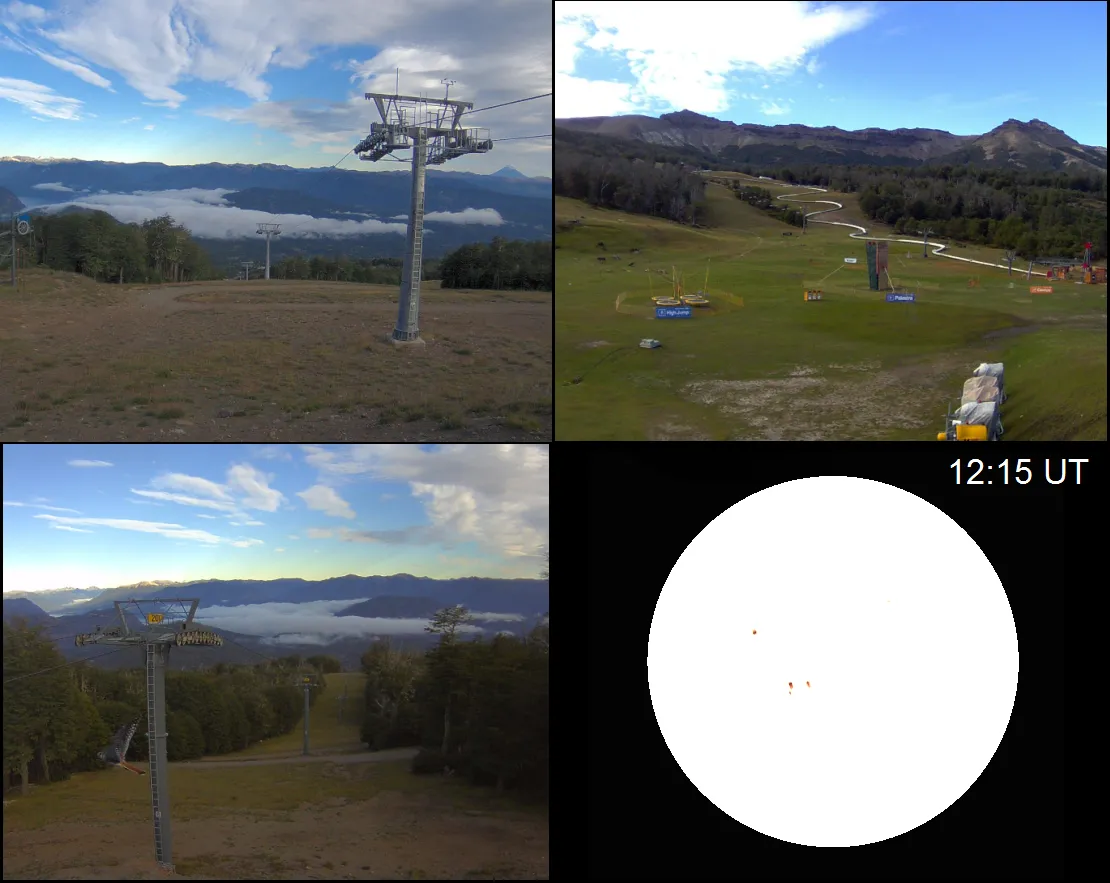
Pic. 2 A first photo pack from my observation (just before Ist contact): left – cameras situated on the top, headed for the north-west, right – camera situated in the valley, headed for the south-east.
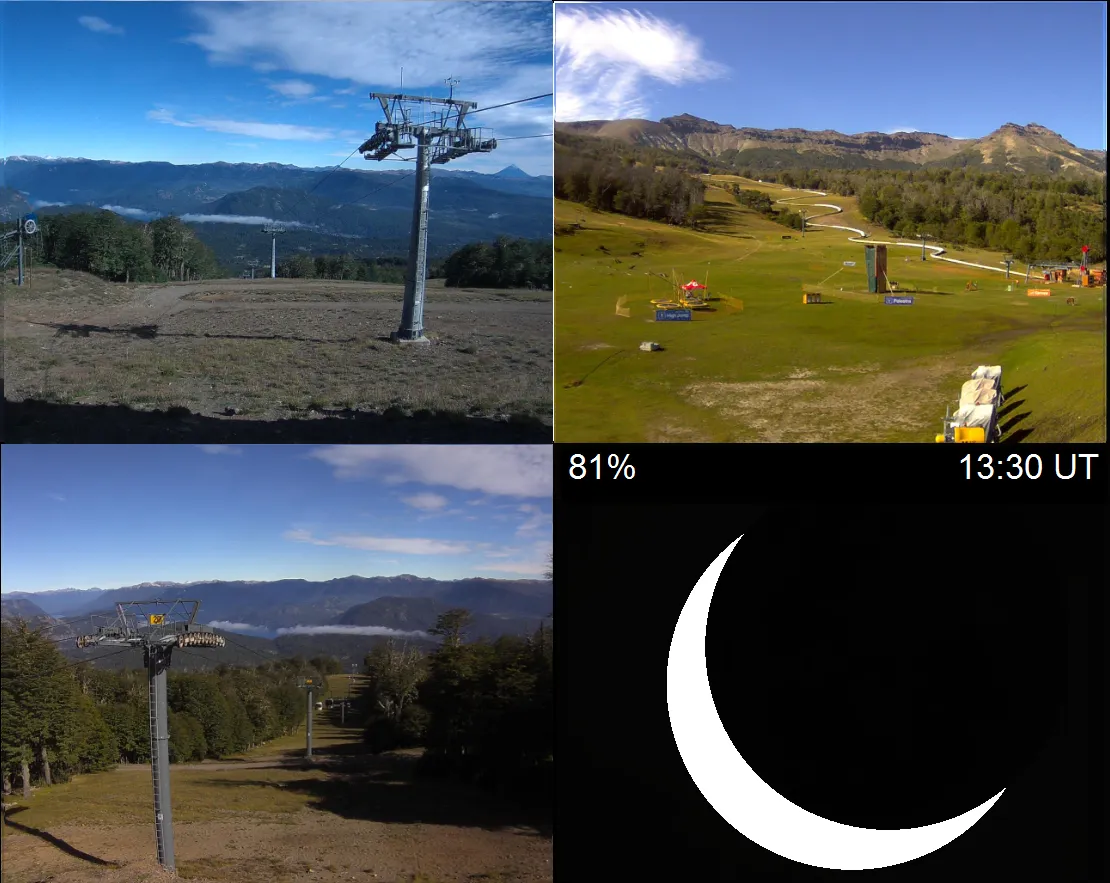
Pic. 3 Photo pack from the maximum eclipse at 13:30 UT: left – cameras situated on the top, headed for the northwest, right – camera situated in the valley, headed for the southeast (chapelco.com).
At first glance picture, no 3 looks a little bit darker than picture no 2, which is understandable. However is one important thing, that may bother eagle-eyed observators. If you look exactly at the sky during the greatest eclipse you can guess that this blue color isn’t blue like it was during the first contact. To be straightforward during a partial solar eclipse sky should get darker in the same color, but images (pic.3,4,5) show, that this blue color contains some red color influence.
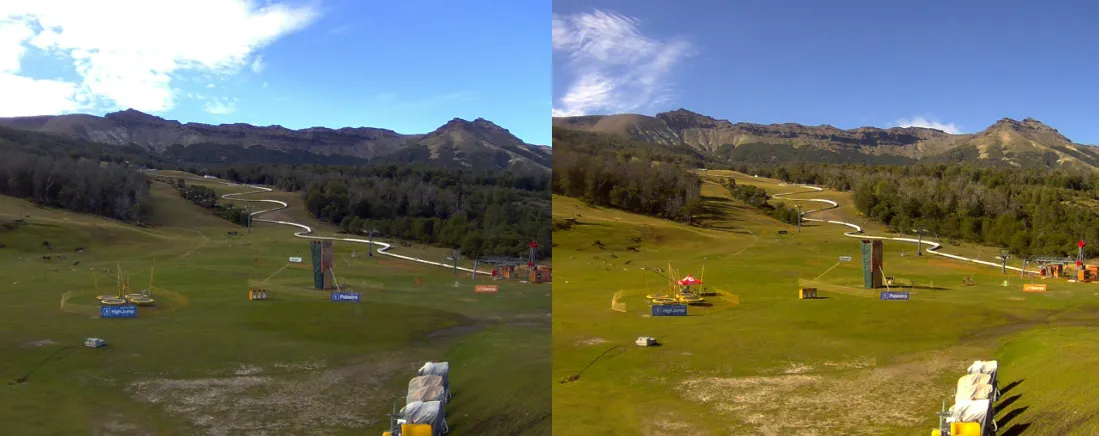
Pic. 4 The comparison of the images from a camera situated on the valley: left – Ist contact, right – greatest eclipse (chapelco.com).
See the grass and the sky in the picture above (Pic.4). Despite the clouds, which briefly veiled the sun during the Ist contact (picture on the left) the grass looks greener than during the maximum phase, where it is mixed with green and quite strong yellow. When you see the sky the situation looks similar, the sky during the Ist contact is light blue (only blue possibly with a little bit part of green). The sky captured around the greatest eclipse is dark blue with a red color influence.

Pic. 5 The comparison of the images from the camera situated on the hillside: left – Ist contact, right – greatest eclipse (chapelco.com).
The explanation for this may be the color of the solar disk. Basically, the outer parts of the solar disk are a little bit redder. During deep partial solar eclipses, we can see the majority of outer parts of the Sun, when the brightest middle of our mother star is covered by the Moon. It may explain why we are witnessing this situation when the obscuration is higher than 50%. I can’t say for sure, that this issue causes the red light appearance, possibly there are other reasons e.g. Rayleigh light scattering. Rayleigh scattering makes the sky blue during the day when the Sun is high above the horizon and has a strong wavelength dependence. Finally, the shorter wavelengths (blue) scatter more than the longer ones (yellow and red). During the partial solar eclipse, where most of the Sun’s disk is covered by the moon some of the wavelengths are removed, thus we can see a little bit more long wavelengths in the atmosphere.
We need to keep doing observations like this (don’t ignore the partial eclipse phenomenon) to gather more proof and data to make a final conclusion.
Picture no 5 does not exhibit this effect. The scene during the greatest eclipse (on the right) is notably darker than during the first contact in the morning (left side). Basically, the direct sunlight during the maximum phase is just a little bit brighter than a shadow of clouds just before the eclipse.
Another notable issue is the color of the sky just above the horizon. The camera situated in the valley is headed southeast (pic. 4), so the sky is darker above the horizon because the path of annularity was coming south of the observation place. On top of that, the bottom camera could not frame a much higher part of the sky due to the high mountains. Unlike to camera situated in the valley, the camera from the top was able to image the lower part of the sky just above the horizon, hence the color is brighter.
The last thing, we can be concerned about is the brightness asymmetry caused by the ISO sensitivity in the cameras. As you see below (pic.7) the pictures started getting brighter just after the greatest eclipse. I mentioned this topic during the African eclipse. Unfortunately, not every camera could give me a clear observation output. In order to the camera situated in the valley (pic.6) makes it really hard to notice, when the eclipse exactly happened. There are two reasons, which made this situation so difficult: the clouds, which sometimes covered the sun, and the sun’s way across the sky. The camera is headed for the southeast. We need to know, that eclipse started during the morning, when the sun was above the southeastern horizon, so very close to the camera framing.

Pic. 6 The observation output from the camera situated in the valley (Chapelco.com).
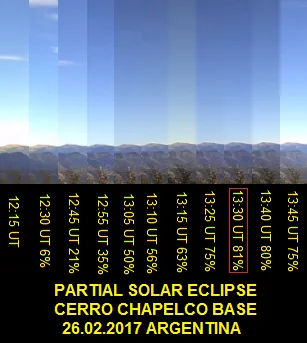
Pic.7 The observation output from the camera situated at the top of the hillside (Chapelco.com).
This observation was based on the Cerro Chapelco server, where there are plenty of cameras deployed across the Cerro Chapelco Base ski resort.
Mariusz Krukar
Links:
Amazing photos from the annular eclipse in Chile (German)
Detailed photos from the annular solar eclipse above Argentina (German)